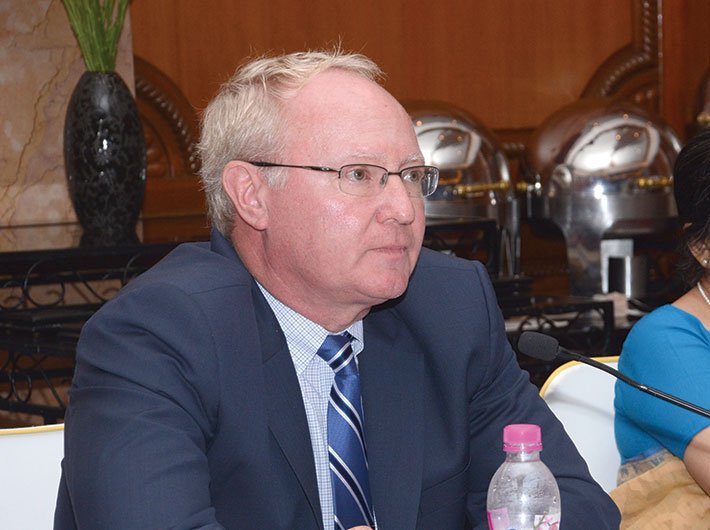Dr Kenneth Thorpe, chairman, Partnership to Fight Chronic Diseases talks about the burden of non-communicable diseases and low expenditure on public health
For the first time, non-communicable diseases (NCDs) have been included by the government in the draft national health policy, 2015. However, efforts to battle this threat remains largely shapeless and lacks monitoring of clinical care. As per recent reports by the ministry of health and family welfare, NCDs contribute to 53 percent of the total disease burden in the country, resulting in 60 percent of all deaths. In an interview with Sakshi Kuchroo, Dr Kenneth Thorpe, chairman, Partnership to Fight Chronic Diseases (PFCD), talks about low expenditure on public health, high out-of-pocket expenses and low prevalence of insurance coverage in India.
What is missing in the government of India’s approach towards fighting NCDs?
Firstly, the problem is with the physical infrastructure. India really needs to invest in building NCD clinics. The government has to focus on primary care of clinics and training of more and more physicians and nurses who can work with the patients. We recently met Delhi health minister Satyendar Kumar Jain and he told us about their latest initiative to set up 1,000 mohalla clinics within a year. That’s a very aggressive schedule but that’s the type of effort and investment that the Indian government needs to make all over the country. Now, to do that, we have to make an additional investment where the public sector will have to spend a little more and we also have to find a way to have the private sector contribute more. Our meeting with the minister was all designed to think through the options about how the public and private sector can work together.
How is more investment by the public and private sector going to help the healthcare sector in India?
Healthcare spending in India is too low. At present the government spends only four percent of GDP on healthcare and most of it is the out-of-pocket expenditure which we really need to minimise. We need to think about expanding insurance so that more and more people are benefited and that’s what we are working on. In the next few years, the insurance package would be much broader than what it is today in the healthcare sector focused on patient care, primary care, and medicines, etc.
Can you please elaborate on the concept of minimising ‘out-of-pocket expenditure’ in healthcare?
A major portion of India’s total health expenditure is paid by the common men from their own pocket. There is very low health insurance coverage here. There are several publicly managed insurance schemes but these cater to government employees, whereas the private insurance sector mostly caters to higher income groups. Unfortunately, most of these plans are mainly limited to covering in-patient hospital care as opposed to primary care medications which is needed to treat chronically ill patients. The government really needs to work on this problem.
Do you feel investment in NCDs should be considered as a poverty alleviation and development initiative in India?
Definitely yes, because such investments generate significant national returns by reducing pre-mature mortality, increase in productive years of life, and reduced costs of managing chronic illnesses. The government also needs to create a roadmap for educating individuals about lifestyle disorders. Investing in health and education improves health outcomes and life expectancy. Each 10 percent improvement in life expectancy at birth is associated with a 0.3 to 0.4 percentage point increase in GDP.
You recently met Delhi labour minister Gopal Rai. What was the meeting about?
We talked to him about opportunities to raise awareness about the role that NCDs play in lost economic growth and lost productivity, so we showed him some numbers. Given the growth of NCDs, India is going to lose 2.5 trillion dollars between 2016 and 2030 in higher healthcare cost unless we address the growing burden of chronic diseases. So we asked him to work with PFCD on making employers aware on what is going on with the employers’ sponsors’ insurance scheme which we want to expand. Also, we are going to put together some ideas that he asked us to develop around the issues of what are the best practices and what can the employers and employees do in terms of prevention and monitoring chronic diseases to keep them healthy. He has asked us to prepare a one-pager document for him to think about its implementation.
As compared to western countries, where does India currently stand in tackling chronic diseases?
Probably not that good. If you take the example of diabetes, at least 50 percent people who are suffering from it don’t even know about it. And the problem is that they show up at the hospital only when symptoms get bad but by then it’s too late. Diabetes is the single biggest source of non-traumatic amputations in the world. If managed, like if you are regularly watching your blood sugar levels, it can be prevented. Coming up with a prevention and surveillance system is a part of the healthcare investment which India needs to work on.
The government is already working on various NCD programmes like national programme for prevention and control of cancer, diabetes and for tobacco control. Are they not good enough?
The initiatives are fine but what we need is coordination and that is a big problem. Say, we take a patient with diabetes, and then on examining we find out that he doesn’t just have diabetes but also high blood pressure, bad cholesterol, other pulmonary diseases. They have got multiple chronic conditions. So we need a coordinated approach to work on such patients in terms of medicines, monitoring and primary care.
In India, the states are responsible for improving public health and the standard of living of its people. However, the limitations of state governments and low levels of public spending are a reality today. How can we overcome NCDs when such basic problems persist?
It is true that the central government can set the direction in tackling chronic diseases but implementation is at the state level. So, that can be done step by step. We have gone to several states and worked on some pilot projects. If they work, we carry it forward. For example, in Tamil Nadu, we have set up a primary care clinic in a rural area which is funded by paying a monthly fee. Now, that’s not really insurance, but an income-related fee which means you pay a monthly fee based on your income and you get access to the clinic. We are working on such pilots, and there are other examples of the private sector. For example, hospitals building diabetes clinics where they take basic primary care and if more acute problem is detected, then they are referred to the hospital.
We are not worried about big cities but rural areas are underserved. They don’t even have a trained healthcare personnel who can provide the people proper healthcare. So that’s what we need to work on.
Then what can also be done is the government can take out-of-pocket expenditure and turn it to either people buying insurance and one can do that by charging the people through dedicated tobacco taxes. If you charge people out-of-pocket they are less likely to use the services.
How is the central government responding to the NCD challenge?
We have worked very closely with the government, especially with Dr Damodar Bachani, deputy commissioner NCD, ministry of health and family welfare. He has worked with us on our blueprint that we framed to fight NCDs in India. But it’s probably going to take five more years for the government to get on track. The current government is very responsive to ideas but they are still in a transition phase. There is a little more activity going on in the healthcare sector since the NDA came to power.
[email protected]
(The interview appears in the October 1-15, 2016 issue)



